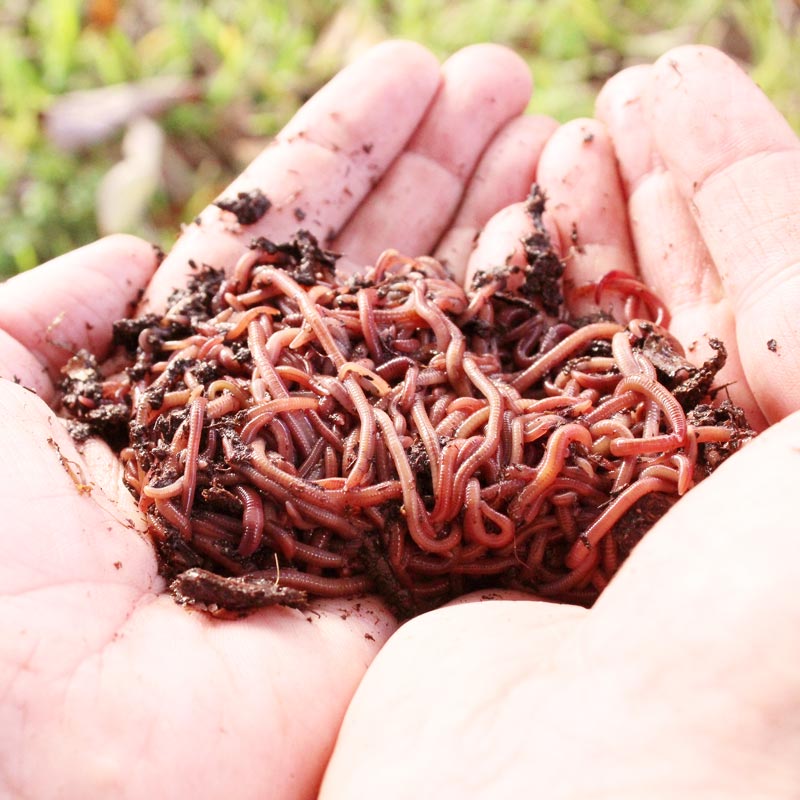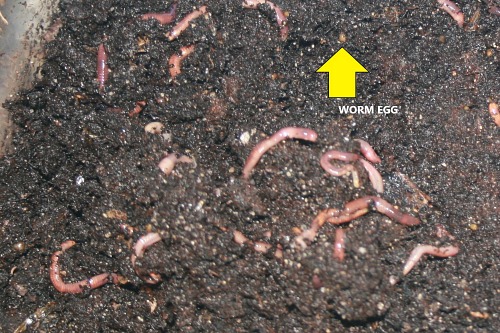Red Wiggler Express: Premium Bait for a Enjoyable Fishing Day
Red Wiggler Express: Premium Bait for a Enjoyable Fishing Day
Blog Article
Red Wigglers: The Unsung Heroes of Organic Waste Recycling
Red wigglers, or Eisenia fetida, serve as critical representatives in the organic waste recycling process, changing disposed of materials into valuable vermicompost. As the globe significantly seeks solutions to combat waste buildup and enhance agricultural performance, understanding the function of these worms comes to be important.
What Are Red Wigglers?
The exceptional resilience of red wigglers, medically recognized as Eisenia fetida, underscores their critical duty in organic waste recycling. These tiny, reddish-brown earthworms are generally located in decaying organic matter, such as compost heap and manure lots. Lake Hickory Bait. Unlike various other earthworm species, red wigglers grow in nutrient-rich atmospheres and are extremely efficient at damaging down natural products, making them vital for vermicomposting

(Red Wiggler Express)In addition to their duty in waste decrease, red wigglers add to soil wellness by boosting soil structure and aeration with their delving tasks (Lake Hickory Bait). Their presence in composting systems not just boosts disintegration rates but additionally advertises a lasting method to throw away monitoring, showing their importance in eco-friendly preservation initiatives
Advantages of Composting With Worms
Composting with worms, particularly red wigglers, uses various advantages that boost both waste management and dirt health. First, these worms effectively damage down natural waste, transforming it into nutrient-rich vermicompost that enriches soil. This process speeds up decomposition, enabling a much faster recycling of kitchen area scraps and various other organic materials contrasted to traditional composting approaches.
Furthermore, the vermicompost created by red wigglers is including helpful bacteria, which aid enhance soil structure, aeration, and moisture retention. This boosts the general health of plants, advertising vigorous development and boosted returns in gardens and agricultural settings. The use of worms in composting minimizes the manufacturing of greenhouse gases, such as methane, adding to an extra lasting waste administration system.

Exactly How to Start Vermicomposting
Establishing a vermicomposting system is a straightforward process that can produce substantial benefits for both waste management and dirt enrichment. To begin, select an ideal container, such as a plastic bin or wooden box, with sufficient ventilation openings to guarantee proper air flow. The measurements should preferably be about 2 feet by 3 feet, allowing enough area for the worms to prosper.
Next, prepare bedding product, which can include see this here shredded paper, cardboard, or coconut coir. This bedding must be moistened to produce an appropriate habitat for the worms. When the bed linens is in place, present red wigglers (Eisenia fetida) right into the container, usually around one pound of worms for every single square foot of surface location.
Following the positioning of worms, add organic waste, such as fruit and veggie scraps, coffee grounds, and smashed eggshells. With these actions, you will efficiently launch a vermicomposting system that contributes to sustainable waste monitoring and enriches your soil.
Maintaining a Healthy Worm Container
(Red Wiggler Express)Maintaining a worm container thriving requires regular attention and treatment to make sure the health and wellness of the red wigglers and the performance of the composting process. Proper upkeep begins with monitoring the wetness levels; the bin should be damp yet not waterlogged. A great guideline is to preserve a consistency similar to a wrung-out sponge.
Oygenation is important. Delicately blending the bed linens and food scraps every few weeks protects against compaction and makes certain that all worms have accessibility to oxygen. In addition, it is very important to feed the worms appropriately. A well balanced diet plan of fruit and veggie scraps, coffee grounds, and smashed eggshells ought to be supplied in moderation to stay clear of overfeeding, which can cause smells and pests.
Temperature law is an additional crucial element. Red wigglers prosper in a variety of 55 to 77 levels Fahrenheit. If the container ends up being as well warm or cool, the worms may become stressed - Lake Hickory Bait. Finally, periodically look for indications of health and wellness, such as worm population growth and the visibility of healthy spreadings. By faithfully handling these aspects, one can keep a durable and effective worm container.
Effect On Lasting Living
The successful maintenance of a worm bin not only profits the health and wellness of red wigglers yet likewise contributes considerably to sustainable living methods. By reusing natural waste, such as cooking area scraps and lawn particles, red wigglers help draw away substantial quantities of product from garbage dumps. This reduction in waste not just reduces greenhouse gas exhausts yet likewise reduces the environmental concern related to waste administration.
Additionally, the castings produced by red wigglers act as a nutrient-rich natural plant food, boosting soil wellness and promoting plant growth. This natural alternative to chemical fertilizers sustains sustainable farming and horticulture techniques, reducing reliance on synthetic inputs that can harm communities. Additionally, worm composting cultivates awareness of waste administration, urging individuals and communities to adopt even more sustainable practices.

Verdict
In summary, red wigglers serve as important factors to organic waste recycling through their effective decay of organic materials. By incorporating vermicomposting right into waste administration approaches, individuals and communities can considerably minimize waste while promoting environmental sustainability.
Report this page